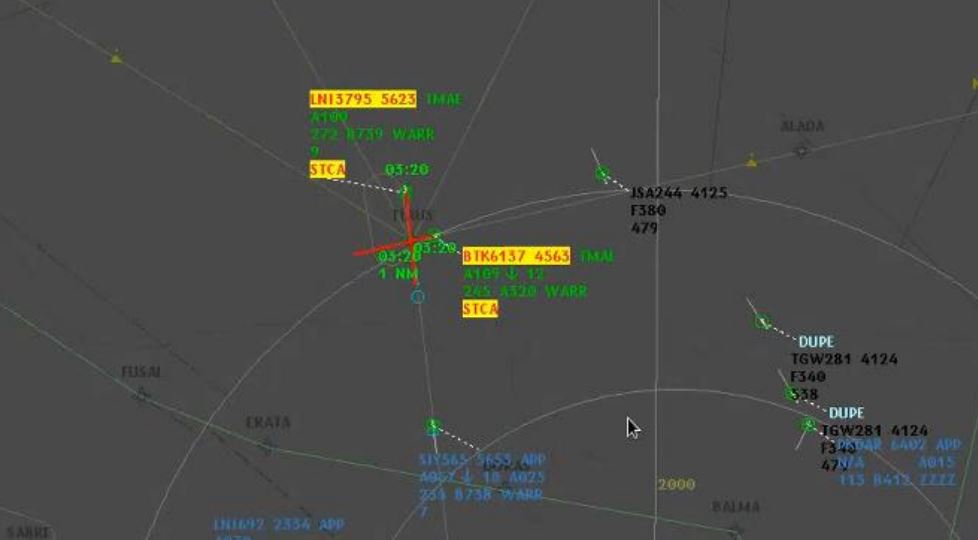
ASN Wikibase Occurrence # 216465
This information is added by users of ASN. Neither ASN nor the Flight Safety Foundation are responsible for the completeness or correctness of this information.
If you feel this information is incomplete or incorrect, you can submit corrected information.
| Date: | Saturday 6 January 2018 |
| Time: | 10:20 LT |
| Type: |  Boeing 737-9GPER (WL) |
| Owner/operator: | Lion Air |
| Registration: | PK-LPF |
| MSN: | 39880/5081 |
| Year of manufacture: | 2014 |
| Fatalities: | Fatalities: 0 / Occupants: |
| Aircraft damage: | None |
| Category: | Serious incident |
| Location: | nr Waypoint TIRUS, Surabaya -
 Indonesia Indonesia
|
| Phase: | En route |
| Nature: | Passenger - Scheduled |
| Departure airport: | Jayapura-Sentani Airport (DJJ/WAJJ) |
| Surabaya Airport (SUB/WARR) | |
| Investigating agency: | NTSC |
| Confidence Rating: |
Lion Air flight JT3795, a Boeing 737-900ER aircraft (PK-LPF) was being operated as a scheduled passenger flight from Sentani International Airport, to Surabaya-Juanda International Airport, Indonesia. At the same time Batik Air flight BTK6137, an Airbus A320-200 aircraft (PK-LUI) was being operated as a scheduled passenger flight from Makassar-Sultan Hasanuddin International Airport to Surabaya.
Both aircraft entered Surabaya East Terminal Control Area (TMA East) and the flight crews were instructed to join the holding pattern over waypoint TIRUS for landing sequence. The controller instructed a step descent clearance for both pilots. At 10:16 hours local time, the controller instructed the JT3795 to descend to 10,000 feet. One minute later the controller instructed the Batik Air pilot to descend to 11,000 feet. All controller instructions were read back properly by both pilots.
At 10:20, Batik Air descended below the cleared altitude of 11,000 feet while JT3795 was maintaining 10,000 feet. Then the Short-Term Conflict Alert (STCA) of the controller radar system activated with an aural and visual alert.
The closest distance of both aircraft laterally was about 1.9 Nm and vertically was about 600 feet. The separation regained after the activation of the TCAS RA warning which was followed by both flights.
The investigation concluded the contributing factor of the accident was:
- The vertical separation reduced to below the requirement due to the target altitude of BTK aircraft was set to 10,000 feet, which made the aircraft passed the assigned altitude.
- The unrecovered fatigue and family issue reduced the pilot awareness during less cockpit activity, resulted in reduced the ability to monitor other traffic and misunderstanding of assigned altitude.
Accident investigation:
 |
|
Sources:
NTSC
Images:

NTSC
Revision history:
| Date/time | Contributor | Updates |
|---|---|---|
| 20-Oct-2018 16:49 | harro | Added |
Corrections or additions? ... Edit this accident description
The Aviation Safety Network is an exclusive service provided by:


 ©2024 Flight Safety Foundation
©2024 Flight Safety Foundation